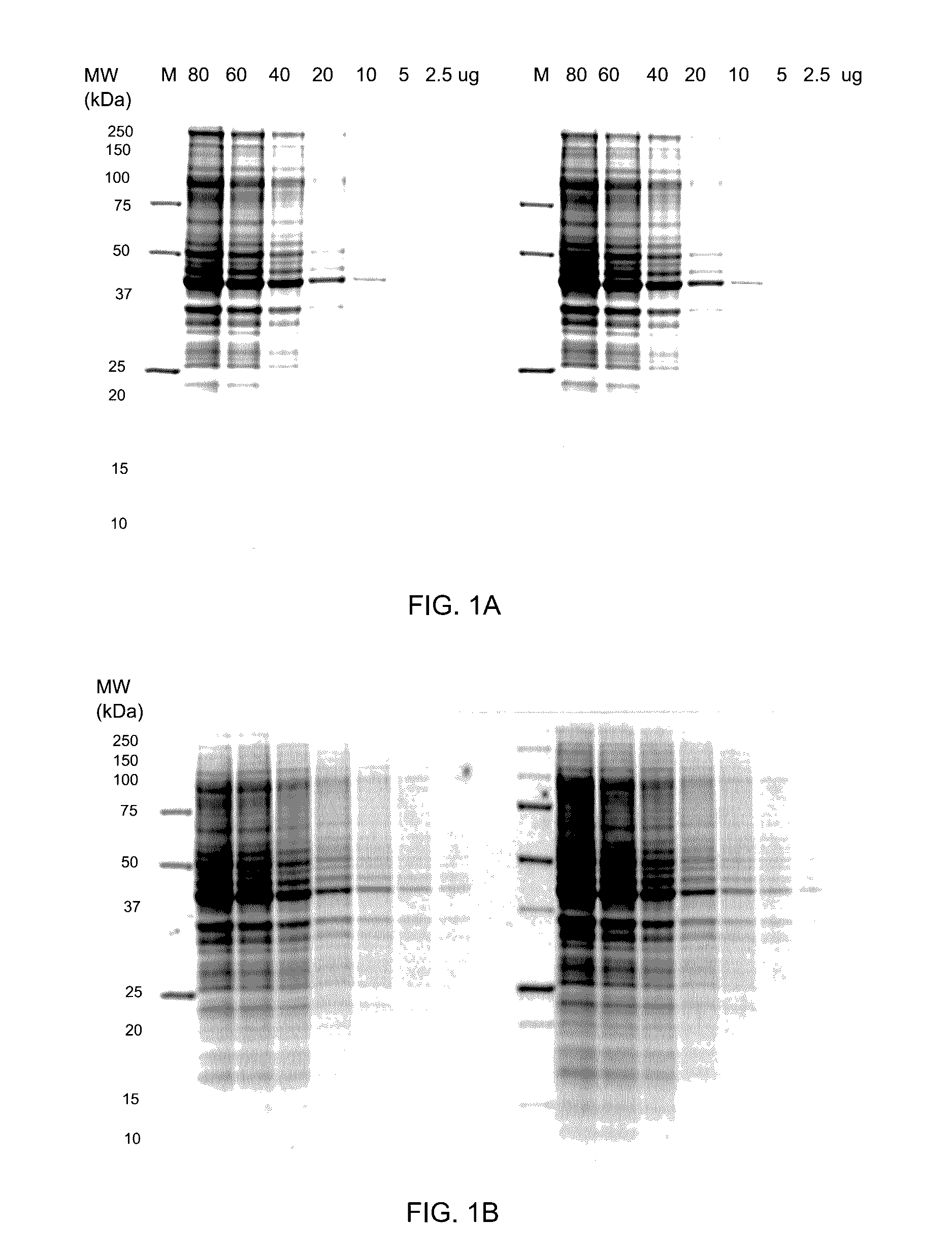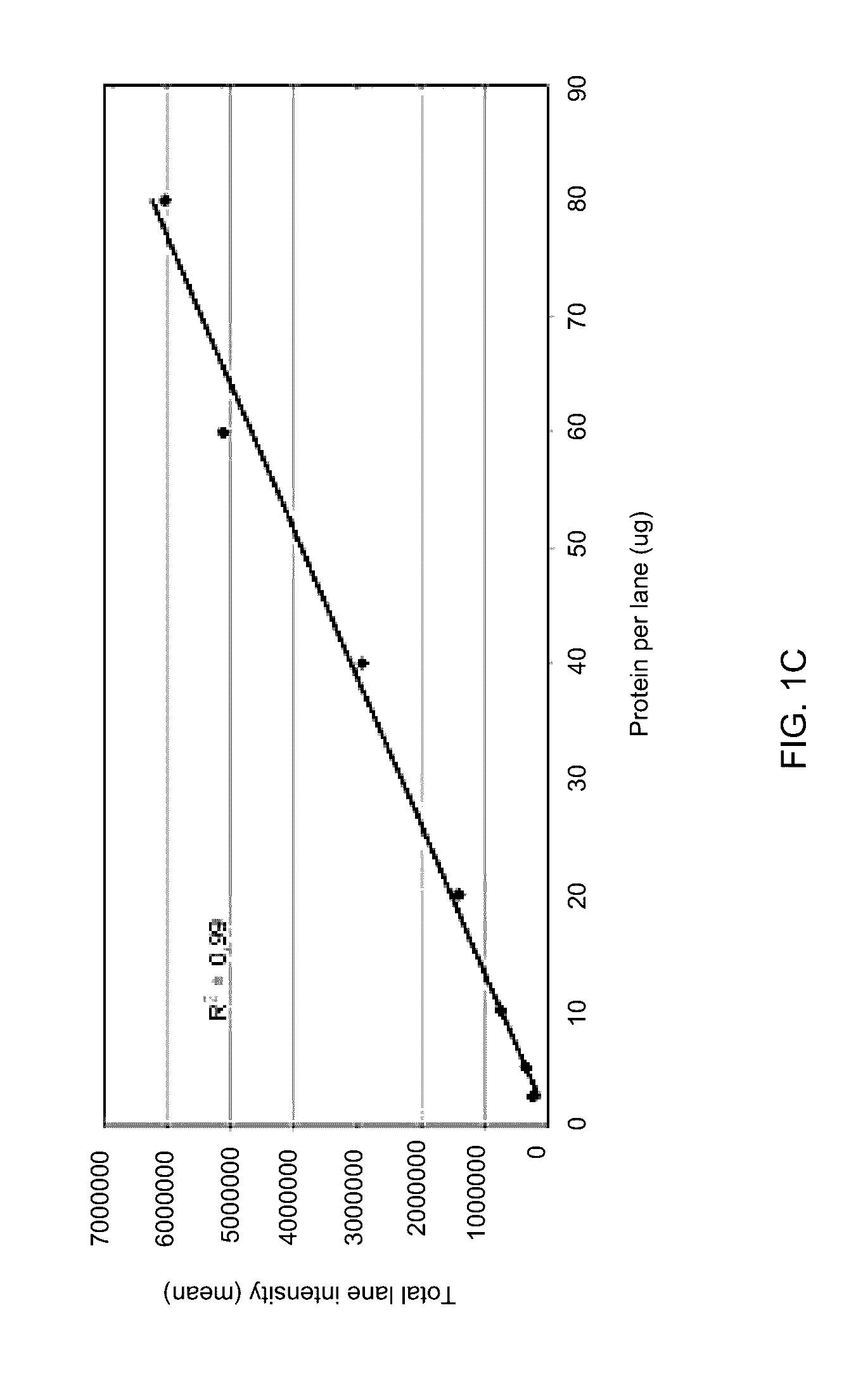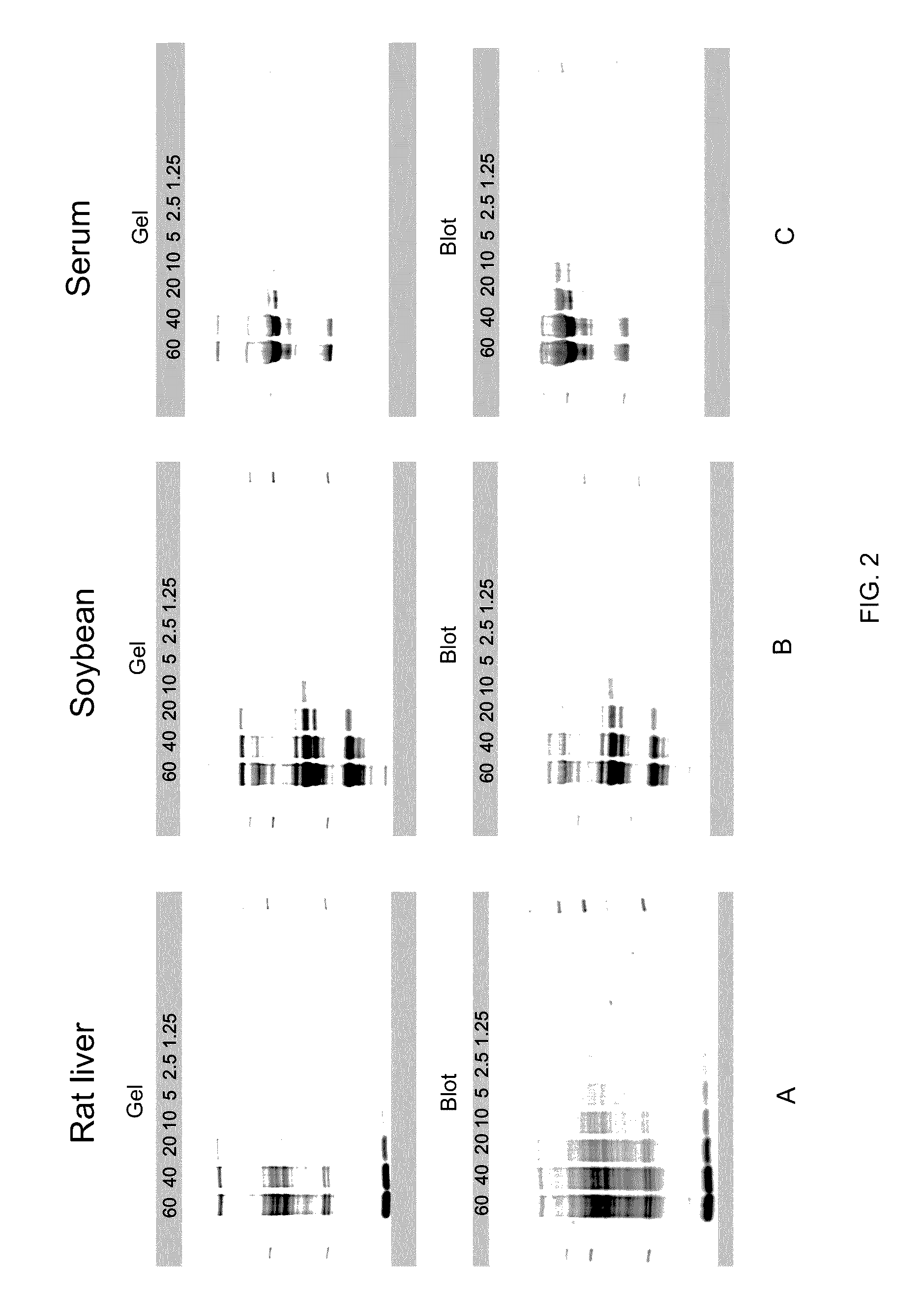Stain-free protein quantification and normalization
a protein and quantification technology, applied in the field of stain-free protein quantification and normalization, can solve the problems of inability to expect, limited recognition of the usefulness of stain-free technique to date, and inability to compare different protein bands in different samples
- Summary
- Abstract
- Description
- Claims
- Application Information
AI Technical Summary
Benefits of technology
Problems solved by technology
Method used
Image
Examples
example 1
Correlation of Haloalkylated Tryptophan Fluorescence Intensity with Cell Lysate Total Protein Quantity
[0084]Stain-free technology enables fluorescent visualization of SDS PAGE gels and corresponding blots. FIG. 1A shows an electropherogram of HeLa cell lysate (2.5-80 μg total protein per lane) separated by TGX “any kD” Criterion Stain-Free 1-D SDS gel (18 slots) and imaged with ChemiDoc MP, where the M lane designates the marker proteins. FIG. 1B shows a Western blot of the same cell lysate separated in the same gels with the same lane loadings, the blot being on a nitrocellulose membrane and imaged with ChemiDoc MP, where the M lane again represents the marker proteins. The quality of SDS-PAGE separations before blotting can be easily monitored and the transfer efficiency of the blotting process can be quickly inspected by imaging both the membrane (see FIG. 1B) and the SDS gel after the blotting process. The relative amount of total protein in each lane on the blot can be calculat...
example 2
Invariance of Total Haloalkylated Tryptophan Fluorescence with Origin and Composition of Protein Extract
[0086]To determine whether the source and composition of a diverse mixture of proteins significantly affects the total amount of haloalkylated tryptophan fluorescence detected from the mixture, protein extracts were obtained from different organisms. The extracts were then diluted to known concentrations to obtain reference protein samples, which were detected on blotting membranes following haloalkylation. The total amount of haloalkylated tryptophan fluorescence detected from each sample was correlated with the total amount of protein in the sample.
[0087]Protein extracts were obtained from rat liver, soybean, and human serum, and the concentration of protein in each extract was determined using established spectrophotometric methods. Reference protein samples prepared from the extracts (60, 40, 20, 10, 5, 2.5, 1.25 μg) were loaded in duplicate onto Criterion TGX 12-2 well “any k...
example 3
Western Blot Analysis with Stain-Free Technology Validates Semi-Quantitative Protein Profiling Studies
[0089]Proteomic technologies like 2-D PAGE are customarily used in semi-quantitative protein profiling studies. After identifying and characterizing proteins that are expressed in different amounts by mass spectrometry, the quantitative data needs to be confirmed by a second, independent method like Western blotting.
[0090]The effect of γ-irradiation on a human LCL cell line (lymphoblastoid cell line) was studied by 2-D PAGE. Among many other proteins that were expressed in different amounts, MCM7, a DNA replication factor, was identified to be down-regulated by about a factor of two in the irradiated LCL sample as compared to a non-irradiated control. To validate this result, a quantitative Western blotting experiment was performed with monoclonal antibodies raised against MCM7. Two data normalization methods, namely data normalization with the GAPDH HKP and the stain-free technolog...
PUM
| Property | Measurement | Unit |
|---|---|---|
| wavelength | aaaaa | aaaaa |
| wavelength | aaaaa | aaaaa |
| temperature | aaaaa | aaaaa |
Abstract
Description
Claims
Application Information
 Login to View More
Login to View More - R&D
- Intellectual Property
- Life Sciences
- Materials
- Tech Scout
- Unparalleled Data Quality
- Higher Quality Content
- 60% Fewer Hallucinations
Browse by: Latest US Patents, China's latest patents, Technical Efficacy Thesaurus, Application Domain, Technology Topic, Popular Technical Reports.
© 2025 PatSnap. All rights reserved.Legal|Privacy policy|Modern Slavery Act Transparency Statement|Sitemap|About US| Contact US: help@patsnap.com



